
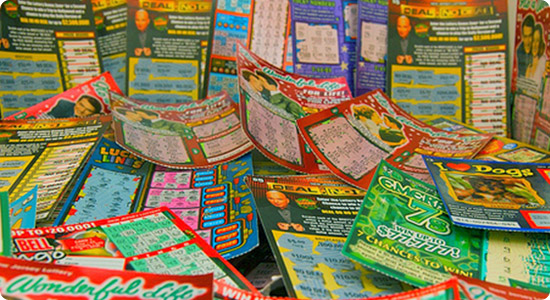
First published in October 2009 | In our June 2009 Trend Briefing, we covered FOREVERISM. But even then, we pointed out that the need for everything that is (right) now/current/real-time, is being satisfied in numerous novel ways, with (wait for it) the online world showing the way forward.
Dubbed 'NOWISM', this mega trend has, and will continue to have, a big impact on everything from your corporate culture to customer relationships to product innovation to tactical campaigns. And yet you probably only have a few minutes to spare on it so we’ve done our best to keep this Trend Briefing digestible.
Let’s start with a definition:

NOWISM | “Consumers’ ingrained* lust for instant gratification is being satisfied by a host of novel, important (offline and online) real-time products, services and experiences. Consumers are also feverishly contributing to the real-time content avalanche that’s building as we speak. As a result, expect your brand and company to have no choice but to finally mirror and join the ‘now’, in all its splendid chaos, realness and excitement.”
*In the end, just like all our other trends, NOWISM represents a case of consumers jumping on something the moment they actually can. So, the need is never new, the new ways to fulfil it are.
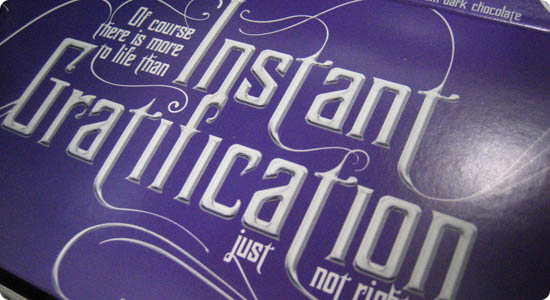
The power of all things ‘NOW’ can be traced back to the eternal lure of instant gratification and our current consumer societies handily accommodating and encouraging this relentless pursuit of instant information, communications, pleasure, if not indulgences. En passant reducing the ‘now’ to mere minutes, if not seconds.
It’s been a steady build-up:
In an age of abundance, with a reduced need for non-stop securing of the basics, and physical goods so plentiful (and/or ecologically harmful) that the status derived from them is sometimes close to nil, only consumption of the experience* and thus the now, the thrill, remains.
In fact, many ‘fixed’ items run the risk of becoming synonymous with boredom, hassle (Maintenance! Theft! Going out of style! Repairs!), eco-unfriendliness, and sinking a large part of one’s budget into one object (which impedes spending on multiple experiences).
* Trends are never ‘or’, they're always ‘and’. There is, of course, always a need for roots, for non-transient relationships, for shelter. People, consumers, still need a base, and still need to be sure the basics are at least available at all times . Owning does imply a certain level of security, something that others can’t just take away from you.
This focus on experiences, this living in the now, instead of in the future, this lust to collect as many experiences and stories as soon as possible, is addictive. Take travel: these days, it's more of a basic consumer need than a luxury. It’s about detachment, fractional ownership or no ownership at all, trying out new things, escaping commitment and obligations, dropping formality, and of course collecting endless new experiences. No wonder tourism is and will remain one of the biggest industries in the world. For more on transient lifestyles, see our TRANSUMERS briefing.
In the still rapidly expanding online world, instant gratification is even easier to obtain: 'digital' has become synonymous with 'instant'. Furthermore, if something digital/online is too slow, too cumbersome, too poorly written, or too boring, a substitute is only a search term and a click away. And yes, this is indirectly setting consumers' expectations for the 'real' world, too.
P.S. For a broader view on NOWISM, please (re-)read Zygmunt Bauman's (a Polish sociologist) musings on what he has dubbed Liquid Modernity. Here are some snippets to get you going:
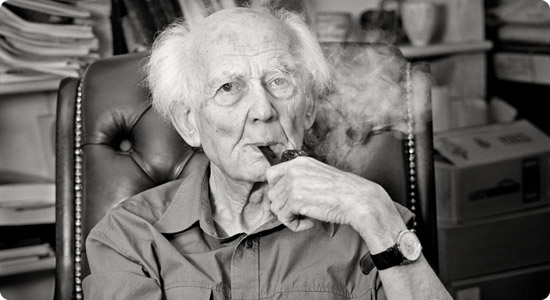
"Liquid Modernity" is Bauman's term for the present condition of the world as contrasted with the "solid" modernity that preceded it. According to Bauman, the passage from "solid" to "liquid" modernity has created a new and unprecedented setting for individual life pursuits, confronting individuals with a series of challenges never before encountered. Social forms and institutions no longer have enough time to solidify and cannot serve as frames of reference for human actions and long-term life plans, so individuals have to find other ways to organize their lives.
Individuals have to splice together an unending series of short-term projects and episodes that don't add up to the kind of sequence to which concepts like "career" and "progress" could be meaningfully applied.
Such fragmented lives require individuals to be flexible and adaptable — to be constantly ready and willing to change tactics at short notice, to abandon commitments and loyalties without regret and to pursue opportunities according to their current availability. In liquid modernity the individual must act, plan actions and calculate the likely gains and losses of acting (or failing to act) under conditions of endemic uncertainty."
Never miss a Trend Briefing again
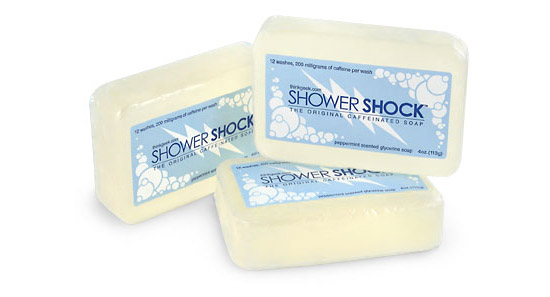
Caffeinated soap, anyone?
In the past, both in our free Trend Briefings and our paid Annual Trend Reports, we’ve spoken about phenomena like ‘FSTR', 'HYPERTASKING', 'BOOST' and ‘SNACKONOMY'. These trends illustrate how more activities are being crammed into ever diminishing timeframes, how convenience is king, how products and services are literally becoming smaller or more fragmented so budget conscious and/or time-poor consumers can collect as many different experiences as possible, how caffeinated drinks, shampoos and chewing gum provide consumers with energy to prolong the 'now', and so on.
For your amusement (or perhaps it’s ammunition for your next innovation session?), a handful of stats and signs of the times all paying tribute to a world in which currency truly is the new currency:
-
A Datamonitor consumer survey in April/May 2009 established that less than half of consumers across 17 countries are satisfied with their work-life balance. Various commitments and demands from work and personal/family life have contributed to the feeling of time-deprivation. People are looking for speed and convenience and anything that allows them to feel more in control of time. (Source: Datamonitor, August 2009.)
- Nearly half of all women (47 percent) said the big stress in their life is the demand on their time. 45 percent said they don't have "enough time for me." (Source: The Boston Consulting Group, August 2009.)
- "The Checkout" report found that 28 percent of June 2009 shoppers describe themselves as "preferring to spend more if it saves them time." This was up from 23 percent in May. Additionally, the number of customers (28 percent) who responded that "saving money by shopping around" was their top preference fell from 33 percent the month prior. (Source: M/A/R/C Research and Integer, August 2009.)
- More than 30 percent of the people who visit a business for service expect instant attention - in some cases even if they do not have an appointment. (Source: Beagle Research Group, August 2009.)
- According to Mintel's Global New Product Database, new energy drink product launches increased by more than 110 percent from 2004 to 2009, boosting sales in that sector during the same time-frame by more than 240 percent. (Source: Mintel, August 2009.)
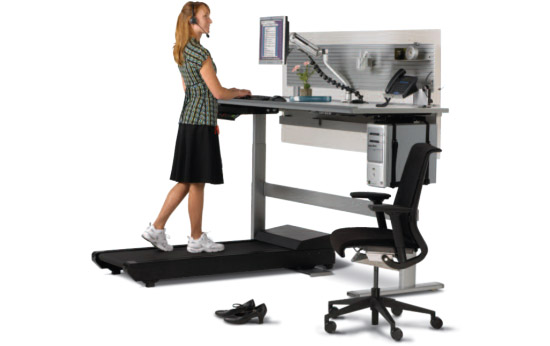
- Office furniture manufacturer Details’ Walkstation is an electric, height adjustable work station attached to a commercial grade treadmill with a maximum speed of 2 miles per hour, and is designed to allow office workers to burn up to 100 calories per hour without leaving their computer screens(!)
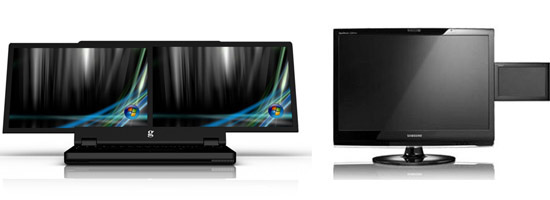
- Expected to go on sale in December 2009, gScreen's dual-screen Spacebook laptop features two 15 inch screens. Last year, Samsung launched the SyncMaster 2263DX, a 22" monitor with an additional 7" screen that can be attached to chat, browse the web, view photos etc.
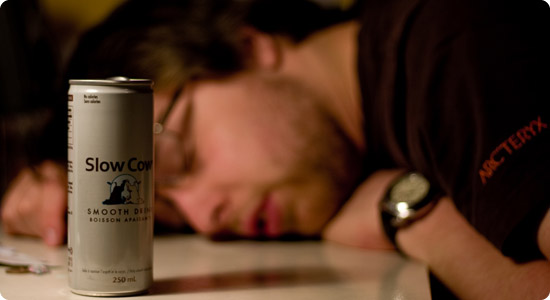
With everything from drinks to shampoo now coming with a caffeine boost to help consumers make even more of the now, its no surprise anti-energy drinks are popping up, too:
- Launched in August 2009 and claiming "euphoric relaxation", Mary Jane's Relaxing Soda uses Fijian kava extract, which the company claims mirrors the effects of alcohol without the negative side effects. The soda also contains passion flower extract, a calming herb used to treat anxiety and insomnia. Similarly, Canadian Slow Cow is positioned as a "relaxing, anti-energy drink”, promoting the benefits of de-stress rather than speeding up.
Enough theory and signs of the times: let's get organized. Here are (just) three distinct NOWISM developments ready for you to run with: the emergence of the real-time web, the growing value of events and performances that are 'live', and the many ways commerce is going truly 'instant'.
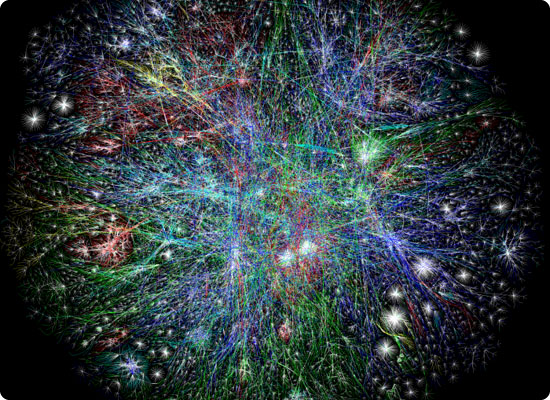
A visualization of (gigantic) global online traffic from The Internet Mapping Project
For NOWISM on steroids, look no further than the burgeoning ‘real-time web’. As netizens are insatiably lusting after (and contributing to) up-to-date info on other people, products, events, news and so on, they are thus obsessed with real-time publishing, real-time search, real-time reviews and price-comparison, real-time news, real-time conversations and more.
And yes, Twitter is the current, deserved poster child for this phenomenon. It's no wonder that even Google founder Larry Page stated that "Twitter has done a great job of real-time search. I think we’ve done a relatively poor job of... things that work on a per-second basis. I’ve been telling our search teams for some time, you need results for every second. They laugh at me. I don’t think they understand this. I think we will do a better job of some of these things now". (Source: Wired, August 2009.)

Total number of tweets, in real-time
The Twitters of this world of course offer a truly real-time snapshot of what the world is thinking, doing, protesting (if not fighting) for and against, loving, reviewing, buying, feeling, attending, traveling to, donating to, gossiping about, asking for, hating, wearing, watching, eating, reading, drinking, listening to... need we go on?
Brands obviously can and have to tap into this GLOBAL BRAIN and its ONLINE PULSE of unheard scale and scope (never before has business intelligence been so in your face), but they then also have to become part of it, engaging in (and initiating) conversations*. And not only are these conversations visible in real-time, they’re visible to everyone. To all one's existing customers, potential customers, employees, competitor's employees, journalists, and so on.
For dynamic brands, living in sync with NOWISM, this will mean a world of real-time customer service, real time (price) offers, real-time product and advertising testing, real-time Q&A, real-time feedback, real-time co-creation. For static brands, NOWISM will mean a painful, lifeless future.
* For more about ongoing customer conversations, co-creation and beta-mindsets, (re-)read our FOREVERISM briefing.
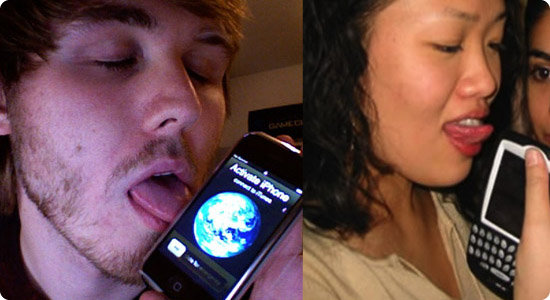
Until recently, 'mobile' was NOWISM's missing link: everyone is now online when at home, in the office, or near a hotspot, it's hard to check or contribute to real-time information if individuals are offline while truly on-the-go. No longer. Count on consumers' INFOLUST (including lusting after knowing what friends, family, celebs, colleagues, foes and so on, are doing/saying/thinking right now) to go completely mobile. Some numbers:
- Globally, mobile data traffic will double every year through 2013, increasing 66-fold between 2008 and 2013. Mobile data traffic will grow at a CAGR of 131% between 2008 and 2013, reaching over 2 exabytes per month by 2013. (Source: Cisco, 2009.)
- The number of Orange 3G mobile broadband customers had increased to 21.7 million at 30 June 2009, compared with 13.4 million in June 2008, an increase of 62% in one year.
- The overall number of individual mobile users in Western Europe is set to grow to 344 million at year-end 2014. By 2014, a third of Western European consumers will own internet-enabled phones compared with 18% in 2009. Mobile Internet adoption is set to grow to 39% in Western Europe in 2014 from 13% in 2008.(Source: Forrester Research, August 2009.)
Expect all the usual NOWISM suspects, from Twitter to Facebook to Google, to intensify the battle for dominating screen space on the iPhone, BlackBerry, Android, Booklet 3G, Palm Pre, Apple Tablet and every portable device that is online 24/7. We ain't seen nothing yet ;-)
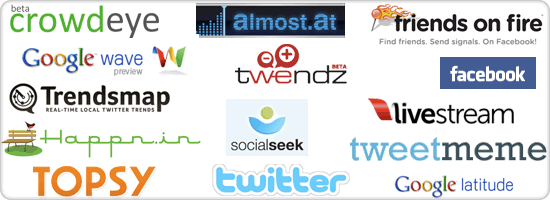
Don’t have a finger on the online pulse yet? Take your pick from the following random list of real-time search engines, content aggregators, alerting services, friend finders and so on:
- Almost.at. An online application that aggregates news from sites such as Twitter, Flickr, Youtube in real-time. The site then allows viewers to tag messages from users who appear to be actually witnessing an event, and that user's future posts will be given prominence in search results.
- Collecta. Claims to be one of the fastest real-time search engines on the web, gathering photos, videos, status updates, tweets, news articles, and blog entries as these items are posted.
- CrowdEye. A real-time social search engine that allows users to see a snapshot of Twitter activity related to their search term, it also analyses tweets, retweets and links to determine important topics.
- Facebook (Real Time) Search. Facebook’s search facility is capable of real-time search, allowing users to view public posts from the site’s vast collection of members around the world.
- FriendFeed (owned by Facebook) is an online platform that allows members to aggregate shared content in real-time. A users’ feed can be populated with content such as links, images and video, which can then be shared within groups or be published to websites, blogs or Twitter.
- Google latitude. Allows users to share their current location with their Google contacts via their browser or mobile device.
- Google Wave. Allows users to create and edit rich-media ‘waves’ in real-time, with changes immediately visible to all participants.
- Google Real Time Search (well, kind of, as reported recently by Omgili).
- Happn.in. Collects and aggregates the most popular phrases used on Twitter within 20 miles of major cities around the world.
- Livestream. A live broadcast platform, available in both free and premium packages, that allows users to stream live video anywhere on the web using a player widget.
- Picfog is a real-time image search engine that monitors tweets for image links and then provides continually updated thumbnails of the latest pictures; these can also be searched by category, keyword, user or location.
- Scoopler A real-time search engine that constantly indexes live updates from services such as Twitter, Flickr, Digg and Delicious.
- Socialseek. Through an aggregation of data from keywords, the application analyses news sites, blogs, Twitter, YouTube, Flickr, and more, to give an overarching and geographically segmented perspective of consumer sentiment. See also Viralheat and Peoplebrowsr.
- Topsy. A search engine that indexes results based on the frequency that they are mentioned in real-time, also taking into account the influence of the people that are talking about them.
- Trendsmap. An interactive world map that displays currently trending topics on twitter, presenting recent tweets and links for each topic.
- Tweetdeck is a browser that users can download to view and interact with multiple real-time social networking feeds from their contacts on Facebook, Twitter and MySpace.
- TweetFeel. TweetFeel gathers recent tweets mentioning a search term and evaluates those tweets for positive and negative sentiment.
- TweetMeme. A service that analyses tweets in real-time to determine the most popular links that are currently being shared, also allowing users to search and share links.
- Tweet on the Street. Searches tweets in real-time to provide the latest rumors regarding both technology and celebrity news.
- Twendz. Analyses posts on Twitter, using a keyword-based system to determine the real-time sentiment regarding trending topics.
- Twitter Search. Twitter’s own search facility, which enables users to filter real-time information using search terms and a variety of advanced search operators.
- Twitvid. A service that allows users to post videos to Twitter by creating a dedicated URL that will be included in their posts.
- Yahoo’s Friends on Fire. A Facebook application that allows users to share their location with their friends, posting updates and invitations directly onto a map. It is powered by Yahoo!’s Fire Eagle location-based social service.
Sure, there are dozens more: a good list to continue your real-time explorations is ReadWriteWeb's Top 50 Real-Time Companies. And by the time you're done checking those out, plenty of new real-time start-ups will have popped up, no doubt reported on by other real-time firms.
For more insights on the Real Time Web, make sure you read JWT's 'The Now Web', and ReadWriteWeb's 'Primer' on the topic.
On our end, we're already working on a NOWISM-meets-ONLINE PULSE update that will include (among others) more examples about NOWISM and GPS / location-based services (as well as the interplay between NOWISM and LOCALITY at large), and the possibilities to form real-time, one-off communities for anything, which in some ways is the ultimate in ephemeral in NOWISM. So, yes, we're asking for your patience here ;-)
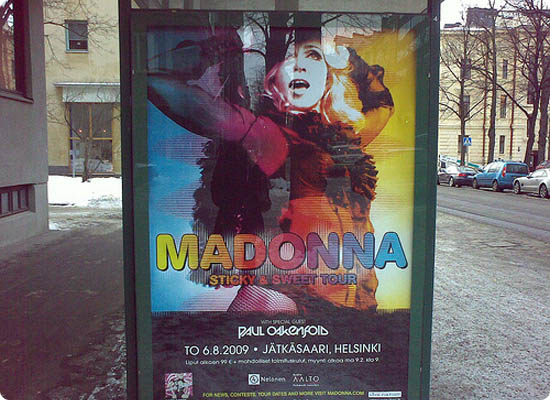
Here's an easy prediction: all things ‘live’, anything that even has a hint of 'performance', will continue to rise in value in a NOWISM world. We've dubbed this LIVING THE LIVE; a NOWISM sub-trend that thrives on:
- Experiences trumping physical possessions, especially when the one-off factor (uniqueness!) and limited access get thrown in as well.
- The online world acting as a giant copy machine of all things digital or prone to digitalization (the COPYCONOMY), leaving only the experience (and related STATUS STORIES) of a live performance that cannot be copied.
- The fact that even with rampant individuality and virtual relationships, human beings do have a deep need to occasionally congregate with other warm bodies in real-world venues and to share and wallow in communal emotions such as enjoyment, sorrow, longing, or anger.

A (pleasant?) side effect of LIVING THE LIVE is that ‘live’ cannot be edited, controlled or censored and therefore offers the possibility of boredom-beating surprises. And surprises, excitement, controversy, scandal, realness, and rawness is exactly what many consumers are openly or secretly craving. Top ratings and top traffic for anything 'raw' that slips through in a sanitized, traditional corporate and media environs are easy proof.
So, in the next 12 months, anything that is live (Concerts! Election nights! Parties! Tastings! Football Games! Musicals! Festivals! So You Think You Can Dance!), tied to a specific place and time will be a brand booster, or a direct revenue source, or both. If you execute these well of course ;-)
Some easy-to-digest LIVING THE LIVE examples, mostly from the entertainment business:
- US reality TV show So You Think You Can Dance launched a live tour in September 2009. Fans of the show can see the top 10 finalists performing live on stage at 40 venues across the US.
- Madonna's "Sticky and Sweet" world tour (2008-2009) made USD 408 million, making it the highest grossing tour ever for a solo artist. Madonna toured 32 countries and performed 85 shows.
- In September 2009, Scotch single malt Laphroaig and Kentucky bourbon Maker’s Mark hosted Distillery LIVE 2009, which aimed to celebrate the relationship between the two whisky brands. The live interactive online tasting was hosted at the Maker’s Mark distillery in Kentucky, where distillers from both companies educated consumers about their whisky and offered advice such as food pairings.
There's a market for semi-live performances, too:
- New York Metropolitan Opera's Live in HD uses HD satellite technology to broadcast opera performances to theaters and cinemas for a global audience. The 2009/2010 season comprises nine shows commencing in October 2009 and screening over 40 countries worldwide.
- Through the NT Live initiative, which began in mid 2009, London's National Theatre films performances live and in high definition, then broadcasts them via satellite to 50 venues across the UK, along with 100 more in the US, Canada and Europe.
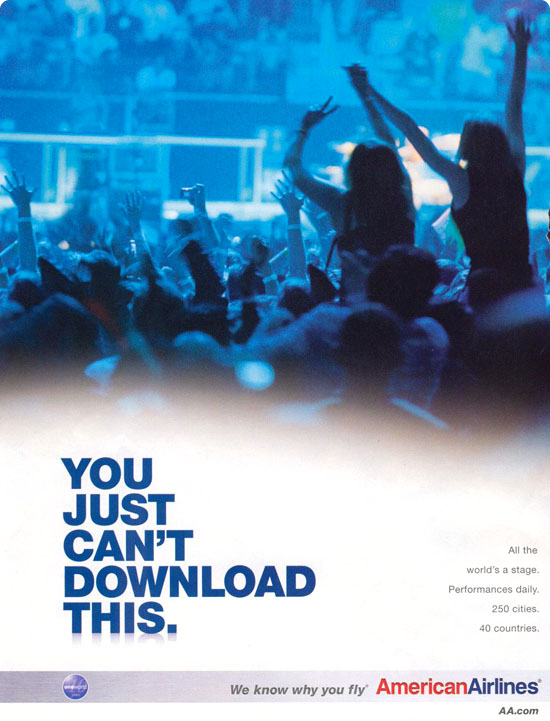
P.S. Check out this recent LIVING THE LIVE advertising example from American Airlines. Remember, when applying trends, one of the easiest ways to get going is to use your trend insights to speak a particular audience's language. In this case, linking flying to live experiences, as opposed to downloading them, is at least trying to incorporate an element of digital lifestyles. However, as those living a digital lifestyle are unconditionally passionate about doing so, we would always opt for avoiding even the slightest negative undertone when squaring off the real world to the online one. But that's just us.
Never miss a Trend Briefing again
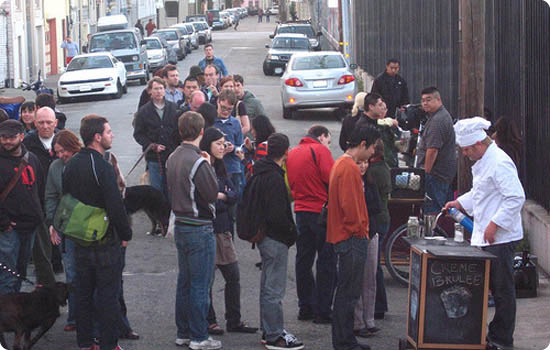
NOWISM is responsible for a spate of instant (e)commerce concepts: who ever said retail was dying? Learn from NOWISM initiatives that revolve around alerts, pop-ups, vending machines, and linking instant info to instant buying. And that's just the beginning.
![]()
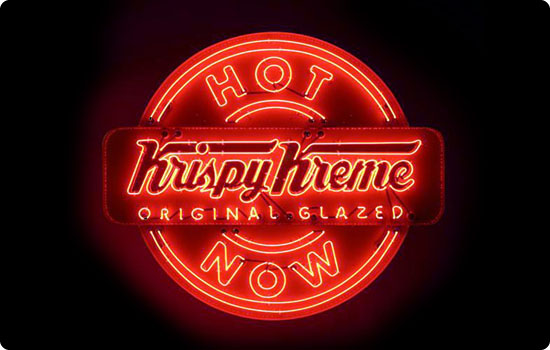
An effective old-school URGE ALERT: Krispy Kreme’s neon Hot Light sign
Alerting is the new searching. No wonder that real-time alerts aimed at stimulating impulse buys (if not urges) are taking off:
- Launched in San Francisco in early August 2009, Curtis Kimball's mobile Crème Brûlée Cart has attracted more than 8,000 Twitter followers, who rely on his tweets to find out exactly where he'll be, and what flavors are on the menu.
- The Warm Cookie Radar from Specialty's Cafe & Bakery sends customers email alerts when batches of just-baked cookies have rolled out of the oven.
- Kogi Korean BBQ sells its Korean/Mexican fusion food primarily through two trucks that are always on the move to new locations in the Los Angeles area. To know where to find them, customers must follow Kogi on Twitter.
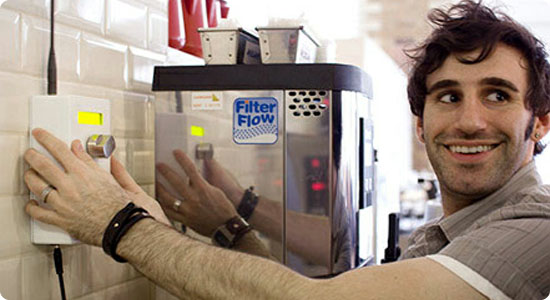
- Designed by creative agency Poke in London, much-publicized BakerTweet allows bakers to keep their customers informed of what's cooking. Because bakery kitchens don't tend to be hospitable to electronic devices, BakerTweet uses a specially designed box that can withstand the messiest kitchen conditions. Bakers begin by creating an account online with BakerTweet, detailing all the baked items they want to Twitter about, along with the body of the Tweet that will be sent out for each product. The wall-mountable BakerTweet box captures that information, allowing bakers to turn a dial to select which item they want to Tweet about at that moment and then push a button to send the full Tweet wirelessly to Twitter. Customers following the bakery then get updated immediately.
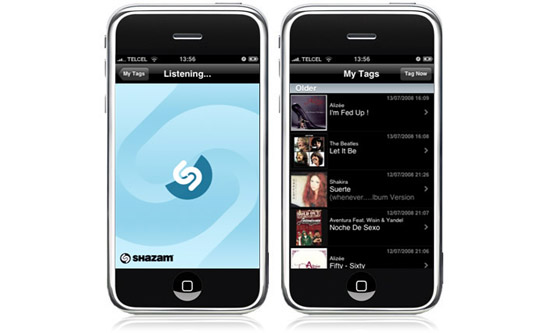
SEE/HEAR/BUY thrives on (mobile) NOWISM technologies that allow consumers to quickly find out more about an item, a song, or anything else they hear/see, and then buy it. This short overview of experience-and-buy services should get you going:
- Shopsavvy, an Android app, allows the user to scan almost any barcode using the phone’s camera, and it will then search over 20,000 online and local retailers to find the best price. Once the best deal has been found, users can either purchase online, or use the phone’s built-in Google Maps feature to find their way to the store.
- Californian SnapTell says half a million iPhone and Android users have downloaded its application (which, unlike Shopsavvy, allows users to photograph a product using cameras in their handsets, and then upload it to the website for reviews, recommendations and best prices), resulting in more than 1.5 million image queries so far. More than one in three buyers click through to an online retailer, earning SnapTell commissions.
- SnapTell is owned by Amazon.com, who recently also released its own, free, Android mobile application. This allows users to take photos of an item on their phone, or scan a barcode, and then have Amazon search for the same product online, enabling immediate comparison with the physical-retail price. If the price is right, users can purchase the item securely from their mobile device.
- SEE/HEAR/BUY pioneer Shazam, which was launched in 2002, offers a mobile app that allows users to identify tracks by recording a small clip of music. The app “tags” the track with a name and artist, and then allows users to purchase the music through an online store. The company just announced that more than 50 million people around the world have used the service; an increase of 15 million users since February of this year.
Related: Midomi’s iPhone app offers a variety of ways for consumers to identify music. They can record a clip of live music, hum, sing or say the name of the song and Midomi will name the track and provide links to online content such as music videos and lyrics. Users can also click through to buy the song immediately. - ColorSnap is a free iPhone application developed by US paint brand Sherwin-Williams. Launched in 2009, the application allows consumers to match the color of a photo taken on their iPhone with over 1,500 colors listed in the Sherwin-Williams database. This color and the complimentary color pallette is then sent to the phone. Next: a 'buy now' link to a DIY retail chain?
So... Who's going to build similar SEE-HEAR-BUY services in 2010 for looking up movies, television shows and even commercials by just saying a few lines? And how will these instant gratification services further shape expectations among infolusty shoppers?
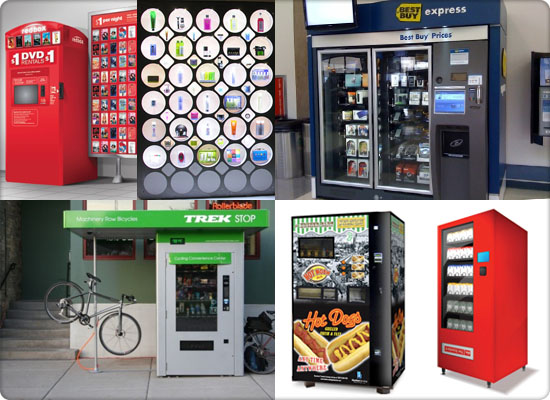
Leave it to NOWISM-loving marketers to come up with vending machines that sell more than snacks and beverages. Some random examples of how anything can be made instantly available 24/7:
- Barcelona company Lof (short for 'Lo Fresco') has developed a range of vending machines that only dispense healthy food, from prepared fruit and ready meals to gazpacho soup.
- Redbox specializes in the vending of DVDs via self-service kiosks. Redbox kiosks are located throughout the US in fast food restaurants, pharmacies, grocery stores and convenience stores, leasing out DVDs from USD 1 per night.
- Launched earlier this year, US based U*tique bills itself as the world's first interactive, automated luxury store for "life's little emergencies and indulgences". Debuting at Los Angeles retailer Fred Segal, U*tique lets consumers learn about selected luxury and personal-care products and have them dispensed with a swipe of their credit card. Only 50 products are available at any given time, and all have been handpicked by product specialists with backgrounds in global beauty, trend-hunting and innovation. The technology features a touch-screen interface, interactive LED lighting design, and a behind-the-scenes robot that delivers products from secure storage into consumers' hands.
- German farm 'Peter-und-Paul-Hof' has begun selling its fresh produce in vending machines. The specially designed Regiomat machines sell milk, eggs, butter, cheese, potatoes and sausage in thirteen German towns and communities.
- The Standard Hotel chain in the US has introduced a retail concept by placing vending machines stocked with designer swimming trunks in their hotels. Quiksilver and André Balazs' have partnered to fill the vending machines in the New York, Los Angeles, Hollywood and Miami hotels.
- Bike manufacturer Trek set up a prototype Trek Stop Cycling Convenience Center in Madison, Wisconsin. Located outside (and operated by) bike shop Machinery Row, the Trek Stop is a convenience center for cyclists. The vending machine is stocked with bicycle products such as spare tubes, patches, tire levers and more, along with food and cold drinks.
- InstyMeds have developed vending machines to dispense medication. The machines are designed to be placed in doctors’ offices, clinics, emergency rooms and other healthcare facilities. Each holds 100 of some of the most often used medications, ranging from pills to drops to creams and so forth.
- Two British companies now sell their version of portable ballet flats in vending machines at nightclubs: Rollasoles sell for about GBP 5 and come in four colors: Hi Ho Silver, Gold Digger, Back to Black and Pink. Afterheels are similar rollable ballet flats which have the added feature of being recyclable.
- Last year, US Electronics retailer Best Buy installed vending machines at 14 major US airports as part of a successful pilot program for the company's new Best Buy express kiosks. The kiosks are large vending machines that carry cell phone and computer accessories, flash drives, MP3 players, headphones, gaming devices, travel adapters, and other items that are likely to appeal to customers on the go.
- Kosher Vending Industries in the US operates "Hot Nosh" vending machines that deliver hot kosher meals in 90 seconds. The company originally launched with more than 50 locations in New York City and has expanded nationwide through partnering agreements and regional licensing.

The Icecreamist pop-up store in Selfridges until November 2009
What can we add to a ‘trend’ that, ever since we coined* it in late 2003 (“If new products can come and go, why can't the stores that display them do the same?"), has gone from a temporary example of temporariness to a NOWISM fixture on every marketing-strategy-to-do list? POPUPPING aka pop-up stores, pop-up shops, and pop-up retail, now encompasses all temporary brand manifestations that add an element of surprise, urgency, and must-have/must-see to shopping, dining, entertaining, lodging, exhibiting and so on.
Three developments within this sub-trend to watch:
- Due to the recession, an increased availability of affordable retail space has made it easier and more attractive to set up pop-up stores and manifestations in some of the most prestigious (and high-traffic) shopping areas around the world.
- With pop-up stores being so abundant, and thus the surprise factor for consumers greatly diminished, expect brands to focus on more outrageous manifestations.
- Also expect a shift in their attention from merely selling or introducing new product lines to turning pop-ups into centers of learning, having consumers try out (concept) products, and, above all, having conversations with customers. In other words: real-world manifestations of CUSTOMER-MADE strategies (pop-up labs, anyone?)
As the number of recent POPUPPING examples is endless, and rapidly available, we’ve highlighted just one (but it’s a tasty one!):
- The Icecreamists is a UK ice cream brand that has positioned itself using premium, X-rated flavors. The Sex Pistol is the most recent flavor, which is available exclusively at The Icecreamists' shop, which opened in London's Selfridges department store last month and will close in November. Mixed into ice cream is ginkgo biloba, arginine and guarana - all promising to increase blood flow and energy level. Before serving, The Sex Pistol is doused in La Fee Absinthe. This is administered from a drip-bag into a pink water gun and then fired at a heated sugar cube, which drops into the ice cream. The Sex Pistol is deemed so potent that sales are limited to one per customer, and retail at GBP 11.99 each serving.
* We’re not sure whether this is something to be proud of, or deeply ashamed

Remember Walter Mischel's marshmallow experiment?
(Photo courtesy of Steve0041)
The rise of NOWISM will no doubt be accompanied by endless fretting about how civilization will succumb to the lack of delayed gratification. Expect NOWISM for many to become synonymous with (and blamed for) shallowness, short attention spans, exploding credit card debts, excessive focus on instantly satisfying urges, an unwillingness to face (and build) a better and sustainable future, indifference to the past (and all its lessons).
While all of this warrants serious attention, the pro-NOWISM camp will point to the dissemination of crucial information, the leveling of the playing field for individuals and organizations, the potentially beneficial effects on the environment of a consumer society shifting towards 'now' experiences (including virtual ones) versus consuming resource-heavy physical goods, and so on.
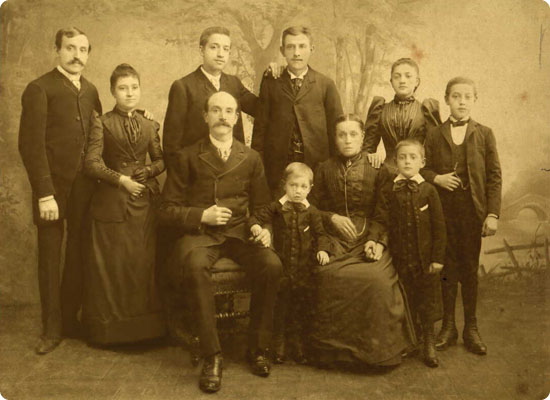
NOWISM enthusiasts will also point out that traditional, much praised preparing-for-the-future attitudes are often obsessed with avoiding any risk in (bourgeois) life: the sole focus is on securing financial wealth (bigger houses, bigger bank accounts, bigger cars) at a forever-postponed later point in time. In many cases, the virtue of waiting is nothing but an effective way to kill any kind of creativity, joy, daringness and spontaneity. Which is not to say that NOWISTS don't care about the future, but future priorities may differ.
As always, as a brand and as a professional, the best thing to do is to look for what works (NOWISM can offer transparency, communications, joyful experiences, convenience, while NON-NOWISM can offer self-restraint, peace of mind, care and reflection). Dismiss the excesses, instead of opting for a black-and-white approach to what is an inevitable societal shift (never forget: one generation's indulgence always becomes the next generation's necessity.)

Embrace the now, and learn how to make it work for you, too!
The NOWISM trend is as big as they come, and we had serious challenges not letting this briefing balloon into dozens and dozens of pages.
The bottom line: while the appeal and influence of ‘now’ has been building for years, societal attitudes, sky-high consumer expectations and new technologies are currently converging in such a powerful way that brands truly have no choice but to go ‘real-time’: in their business intelligence processes, in their customer conversations, in their innovation labs, in their distribution, sales, marketing and branding departments...
The many examples above (from new ways to monitor the arena to how to engage customers to clever new products and services catering to infolusty, instant-gratification loving consumers), should provide you with enough ammunition.
Time to (finally) get real & go with the zeitgeist ;-)


